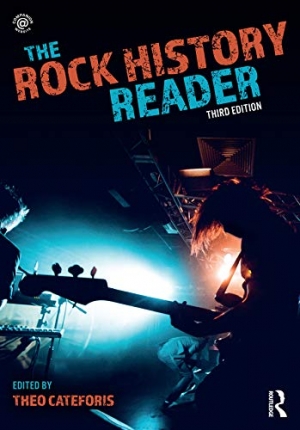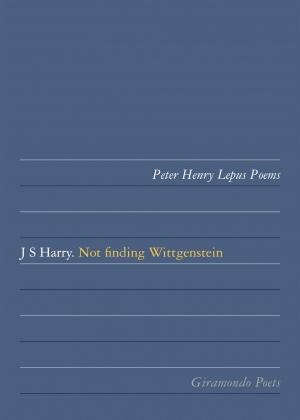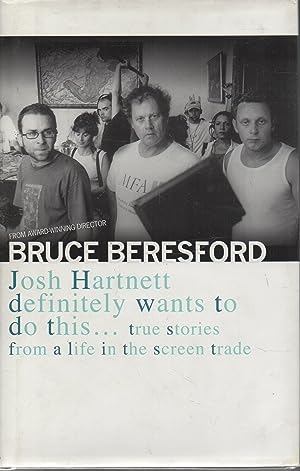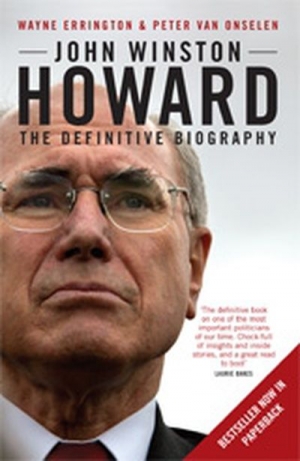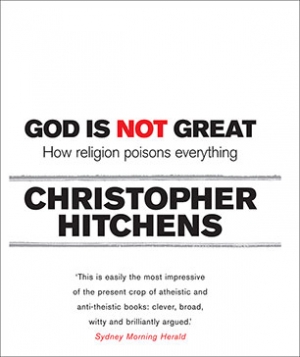Archive
Handsomely illustrated, beautifully produced and authoritatively written, Gavin Fry’s monograph on Albert Tucker aims to establish him as an important artist within the Australian twentieth-century canon. Fry begins his introduction with the statement that Tucker ‘was a man who inspired strong feelings and his work likewise required the viewer to make a stand. Many found his work difficult, some even repellent, but the artist and his art demanded attention. Equally gifted as a painter, and possibly more so as a draughtsman than his contemporaries Nolan, Boyd and Perceval, Tucker belongs with this élite who revolutionised Australian painting in Melbourne in the 1940s.’ But is this really so? Was Tucker really so much better than his contemporaries, or even as good as them?
... (read more)Clem Bastow reviews 'The Rock History Reader' edited by Theo Cateforis
Attempting to theorise or intellectualise rock‘n’roll, one could argue, is to miss the point. As Almost Famous’s egomaniac Stillwater vocalist Jeff Bebe put it, ‘I don’t think anyone can really explain rock‘n’roll – [except] maybe Pete Townsend’. In which case, Bebe would probably get a kick out of editor Theo Cateforis’s lovingly composed The Rock History Reader, which, unlike other publications in a similar vein, allows the theorising and intellectualising – the explaining – to nestle alongside autobiographical passages and personal anecdotes, providing a complex view of rock’s annals. If you didn’t already know who put the bomp in the bomp-a-bomp-a-bomp, you’ll probably find more than a few clues in this volume.
... (read more)To earn some money as a student in the late 1980s, I did a short stint at CSIRO Marine Laboratories in Perth, identifying deep-sea fish. I spent a couple of weeks up to my armpits in pale, preserved and squashed fish, which were extremely hard to identify, partly because of their misshapen form and lack of colour, but also because many of the species were entirely new to science. Some looked like old, flattened doughnuts and clearly lived on the seabed. Others were compressed sideways and had light-emitting organs on their sides, strange plate-like structures or razor-sharp serrations along their bellies, and were clearly more adapted to a mid-water mode of existence. But without exception, these fish were drab and dead as dead can be. I can only imagine what they must have been like when alive in their natural environment.
... (read more)Geordie Williamson reviews 'Diary of a Bad Year' by J.M. Coetzee
In 1880, Turgenev visited Tolstoy at his country estate after a long period of estrangement, only to discover that the great novelist had, in the interim, renounced art in favour of ethical enquiry. Turgenev was appalled, and dashed off a letter complaining that ...
... (read more)Peter Porter reviews ‘Not Finding Wittgenstein’ by J.S. Harry
Satire is more than just biting animosity or moral denunciation, though in those shapes it has made its greatest contribution to world literature – from Aristophanes and Juvenal to the first Samuel Butler and Swift. The convention only works in relatively permissive societies. During the worst excesses of censorship in the Cold War, the authorities were seldom worried by satires cleverly concealed as fables or dystopian extravaganzas. Let the cognoscenti exchange winks, their rulers knew that the mob was not interested and the state hardly threatened. The censors themselves may well have enjoyed the ingenuity of their indignant critics – so Zbigniew Herbert, Miroslav Holub and Andrey Voznesensky prospered without having to defect to the West. Meanwhile, satire turned into cabaret in our part of the world.
... (read more)Peter Craven reviews ‘Josh Hartnett Definitely Wants to Do This: True stories from a life in the screen trade’ by Bruce Beresford
Bruce Beresford has left a greater imprint on the national sensibility than most people might think. From The Adventures of Barry McKenzie (1972) through The Getting of Wisdom (1977) and Breaker Morant (1980), he has demonstrated a virtuoso ability to dramatise Australianness, classic and modern. His films Don’s Party (1976) and The Club (1980) mean that we are never likely to forget the idiom in which David Williamson first represented us, because Beresford has made it part of the cinematic argot of the country; a new production of a play is automatically measured by how much the actors stand up to the classic performances of Graeme Kennedy or Ray Barrett or John Hargreaves in Beresford’s vision of the plays.
... (read more)Norman Abjorensen reviews ‘John Winston Howard: The biography’ by Wayne Errington and Peter van Onselen
Contemporary biography presents many challenges, even more so when the subject is a politician who is still in office. It is, at best, a progress report: necessarily provisional both in its analysis and its attempt to anticipate the weightier judgment of history. By its very nature, it inclines more towards journalism than towards scholarly assessment.
... (read more)Tamas Pataki reviews ‘God is not Great: How religion poisons everything’ by Christopher Hitchens
The only salutary effect, it seems to me, of the evolution of religious fundamentalism over recent decades is the current reaction of some scientists, philosophers and public intellectuals. Since the end or the Enlightenment, interest in reasoned polemic against religion (which excludes communist attempts to extirpate it) has largely waned, possibly on the false supposition that the quarry had been mortally wounded. But the emergence of ruthless Islamist ambitions and terrorism, and the malign influence of elements of the Christian right and of right-wing Jewish groups, especially in George W. Bush’s America, appear at last to have spurred intellectuals to produce books and documentaries, to confer and to organise, to engage in resistance to what is rightly perceived as a religious assault on reason and liberal values, as the dying of secular light. The most prominent of the current critics are the philosophers Daniel Dennett and Michel Onfray, the biologist Richard Dawkins and the versatile Christopher Hitchens.
... (read more)Set in a seaside town whose name changes with the vagaries of its fortunes (Salvation, Ruination, Ridicule), Andrew Lindsay’s Slapping Man is a simpleton called Ernie who discovers a remarkable use for his gargantuan jaw. Determined to transform this facial liability into a money-making asset, he positions himself at the local market next to The Human Pincushion and The Man That Never Laughs and transforms himself into The Slapping Man. As the rhyme on the cover explains, Ernie’s spruiking patter relies on the desire for cathartic violence: ‘Feeling poorly, sick or weak? Just come down and crack my check! Don’t be sad, Don’t need to Frown, The Slapping Man has come to town!’ Owing to the circumstances of his conception and the size of his jaw, Ernie seems to have been destined for a career as a human punching bag, an easy and willing target for malcontents to vent their anger upon. And there are plenty of candidates, considering Salvation’s disaster-riddled history.
... (read more)Robert Reynolds reviews ‘Detainee 002: The case of David Hicks’ by Leigh Sales
What is to be done with David Hicks? For more than five years, this question bubbled away in Australian political discourse, ever more so as the years passed. Today Hicks sits in a South Australian prison, serving out an abbreviated sentence for supporting terrorism. In a few months he will be a free man; well as free as his notoriety and an unforgiving government will allow. Hicks’s guilty plea and his short sentence (tax evasion can land you a heftier punishment) have taken the heat out of the affair. This is probably a good thing for Hicks, and even better for the embattled Howard government.
... (read more)

